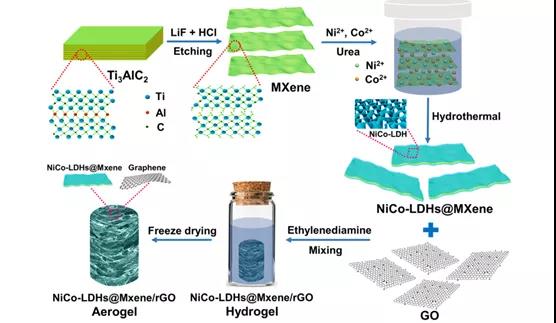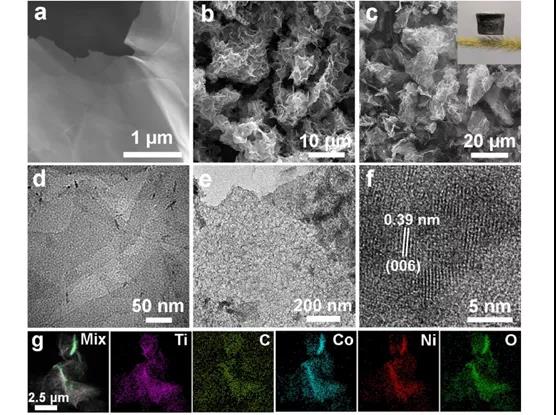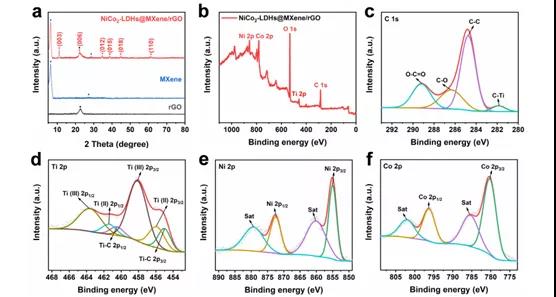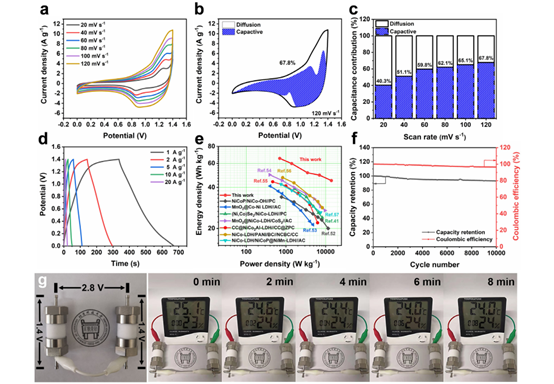
hotline:
17715390137
Tel/Wechat:
18101240246 (Technology)
0512-68565571
Email:mxenes@163.com (Sales Engineer)bkxc.bonnie@gmail.com
Scan the code to follow or search the official account on WeChat:
2D Materials Fronrier After paying attention,
click on the lower right corner to contact us,
Enter enterprise WeChat.
Professional Services Online



In order to minimize the consumption of fossil fuels and reduce environmental pollution, some energy storage and conversion devices, such as batteries (such as lithium/sodium ion, lithium sulfur/air, zinc ion batteries, etc., as well as electric double layer capacitors (EDLCs) and pseudo capacitors ) Is a promising alternative. However, although the battery has a high energy density, the charge and discharge time is long, and the power density is low; the charge storage of the supercapacitor in the surface area is limited, and the energy density is low, but due to the fast charge and discharge speed, a higher power density can be obtained. Therefore, it is very necessary to combine the characteristics of the two to form a new type of composite supercapacitor energy storage device.


Recently, the research group of Professor Wang Ning of University of Science and Technology Beijing published a research paper titled Integrated NiCo2-LDHs@MXene/rGO aerogel: Componential and structural engineering towards enhanced performance stability of hybrid supercapacitor in the well-known academic journal Chemical Engineering Journal.

Figure 1. NiCo2-LDHs@MXene/rGOaerogel synthesis process

Figure 2. NiCo2-LDHs@MXene/rGO aerogel SEM and TEM characterization.

Figure 3. NiCo2-LDHs@MXene/rGOaerogel XRD and XPS phase analysis.

Figure 4. NiCo2-LDHs@MXene/rGOaerogel three-electrode test results in 2M KOH electrolyte.

Figure 5. NiCo2-LDHs@MXene/rGO//MXene/rGO asymmetric capacitor device.
In this work, a series of aerogels were prepared and combined with two-dimensional MXene, LDHs and reduced graphene oxide. As a battery electrode of a supercapacitor, NiCo2-LDHs@MXene/rGO aerogel has a specific capacity of 332.2 mAh g-1 at 1 Ag-1, and the capacity retention rate at 5 A g-1 after 5000 cycles It is 87.5%.
Literature link:
https://doi.org/10.1016/j.cej.2020.125197
Information source: MXene Frontie
This information is from the Internet for academic exchanges. If there is any infringement, please contact us and delete it immediately

| Reminder: Beijing Beike New Material Technology Co., Ltd. supplies products only for scientific research, not for humans |
| All rights reserved © 2019 beijing beike new material Technology Co., Ltd 京ICP备16054715-2号 |